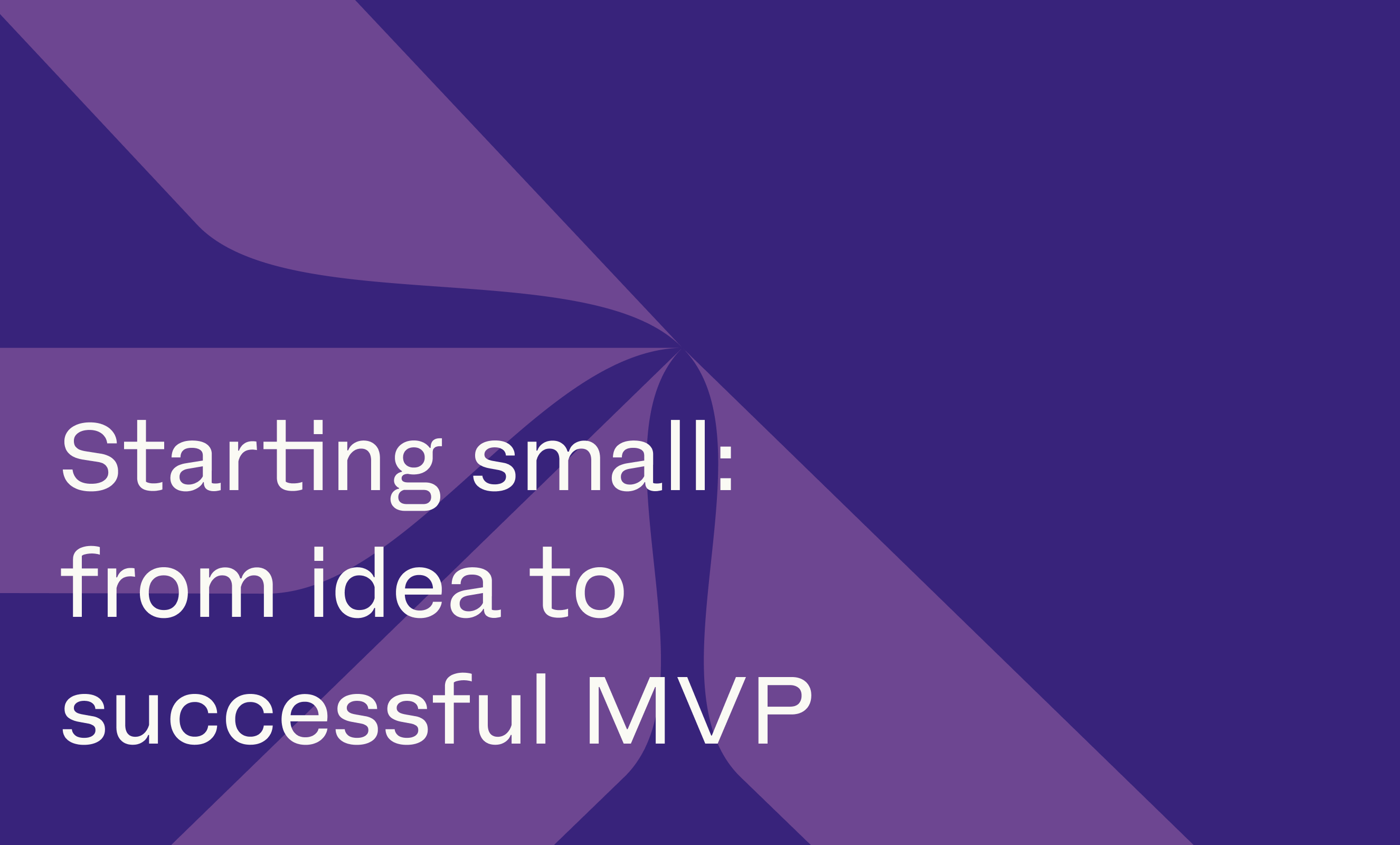14 September 2023
Starting small: from idea to successful MVP
So, you've had that lightbulb moment and are ready to build a digital product. The steps you take next can mean the difference between creating a product that your customers love and losing sight of your initial vision. That's where following a proven path to go from idea to Minimum Viable Product (MVP) is crucial.
Filters

What is an MVP and why is it important?
An MVP is a scaled-down version of your product that only includes the essential features needed to solve a specific problem. It is your ticket to materialising your idea in its most basic form. Instead of dedicating significant time and resources to developing a comprehensive product, you streamline it by focusing solely on the essential components required to address the core problem and generate value. Adopting this approach means you can release the MVP more quickly, gather user feedback and make data-driven decisions to refine and expand the product over time.
How to successfully move from idea to MVP
Great product design is all about finding the right approach and process. Let's take a look at the steps to transition your idea to MVP.
Choose the right digital product partner
Finding the right digital product partner is critical for the success of your project. Look for a company like Miyagami with a proven track record in product design and development; a reliable, experienced partner that will guide you through the process, making sure they get a complete understanding of your vision, your audience and your goals.
Your chosen partner will bring a wide range of expertise to the table to help you turn your idea into a reality. Choosing a digital product partner who understands the importance of wise investment and strategic resource allocation ensures your money is spent wisely, maximising impact by allocating resources right where they are most needed.
Identify the problem
Working with your digital partner, start by clearly defining the problem your product aims to solve and identifying your target audience. Understanding your users' pain points will drive the direction of your design and development efforts, ensuring that your MVP meets their specific needs and preferences and addresses any common challenges.
Define your business requirements
At this important stage in the process, your digital partner will conduct a thorough technical analysis to identify the technology stack and resources needed for your project. By carefully defining your business requirements, you build a solid foundation and avoid the common mistake of having to rebuild or make significant changes later on. This maximises your ROI, future-proofs your product, ensures scalability and saves a great deal of time in the long run.
Conduct market research and gather user feedback
Market research and user feedback are invaluable in shaping your digital product strategy. Taking the time to analyse your competitors, understand the market landscape and gather insights from potential users helps you refine your idea, test hypotheses and create a solid roadmap for your MVP. By working with an experienced partner with industry expertise and fresh perspectives you can enhance your offering and provide additional value to your users.
Create a design prototype
This is where things start to take shape. The point where you translate your product strategy into a tangible design by creating user flows, wireframes and interactive prototypes. Your partner will conduct usability testing with people from your target audience to validate your initial idea and gather feedback so you can make informed design decisions that result in a winning product. This iterative way of working ensures that your MVP aligns with user expectations and needs right from the start.
Develop the Minimum Viable Product (MVP)
Now you can focus on developing the essential features and functionalities that address the core problem identified earlier. By keeping your MVP lean and focused, you can get your product to market quickly, start collecting that all-important user feedback and iterate based on how people will use it in the real world.
Conduct thorough user testing
Thorough user testing is key to understanding how your target audience interacts with your MVP. This step allows you to identify and address any issues, observe how people interact with the product, fine-tune the user experience and gather further insights to guide future design iterations. Getting to grips with what your audience wants gives you the competitive edge and ensures your digital products make the right impact with the right people.
Iterate and refine
After launching your MVP, your digital product team will continue iterating based on user feedback and market insights. To ensure your product remains relevant and tailored to user needs, it is crucial to gather feedback and market insights. This involves collecting both anecdotal feedback and insights from user engagement metrics using a range of powerful analytic tools.
It is important to note that what users tell you and how they actually interact with the product may differ. By adopting this approach, you cover all bases and gain a comprehensive understanding of user preferences and behaviours.
Take the next steps to your ideal digital product
Ready to take your business to the next level? Collaborate with a digital product partner like Miyagami who understands your vision and can guide you through the design and development journey.
Choose a partner with a proven process that offers ongoing support for your digital evolution. With our expertise, you can navigate the complexities of the digital landscape, bring your ideas to life, streamline processes and achieve a successful digital transformation.
Contact us today and let our knowledgeable and experienced team be your trusted digital product partner. Together, we'll shape the future of your business in the digital age.



